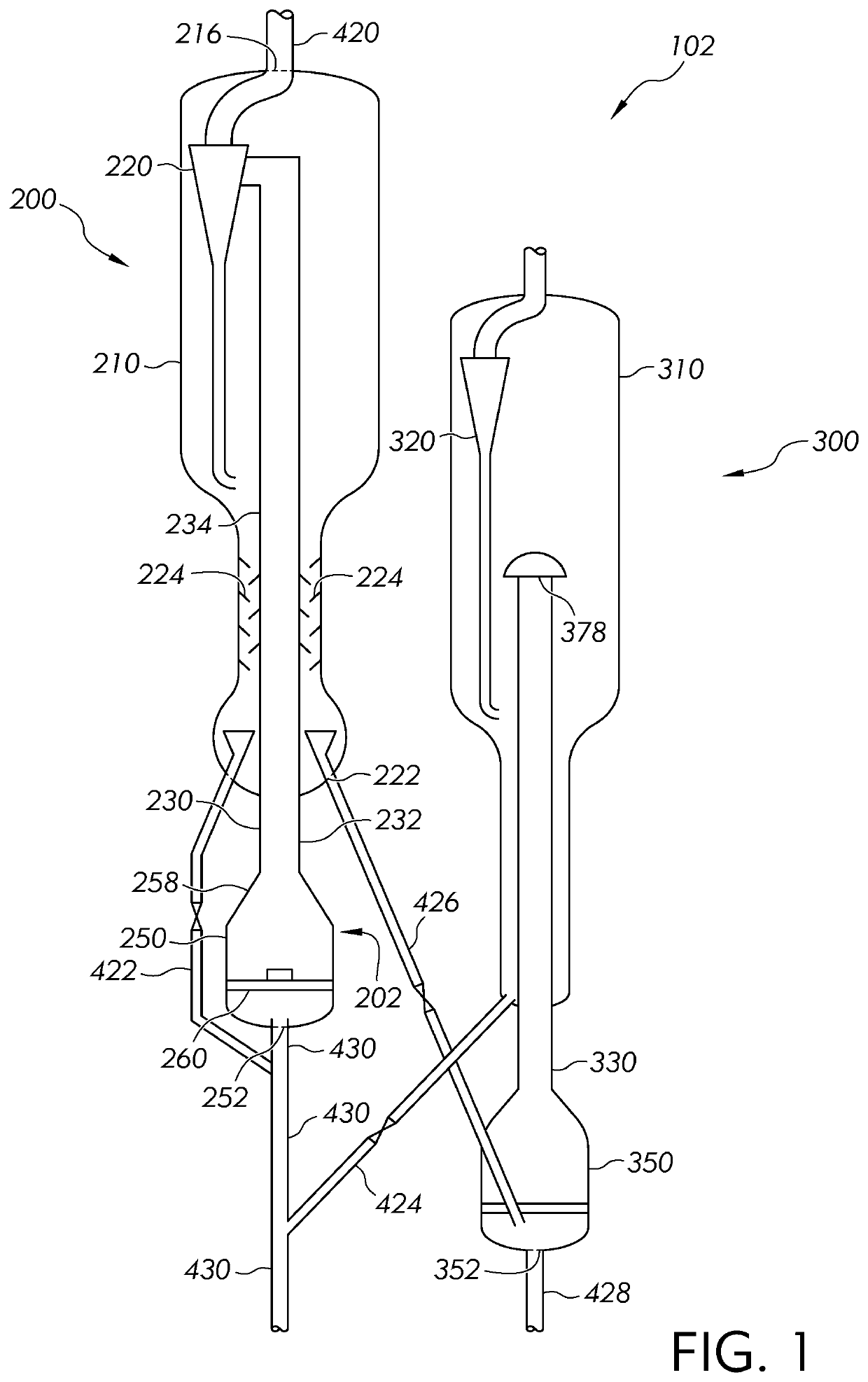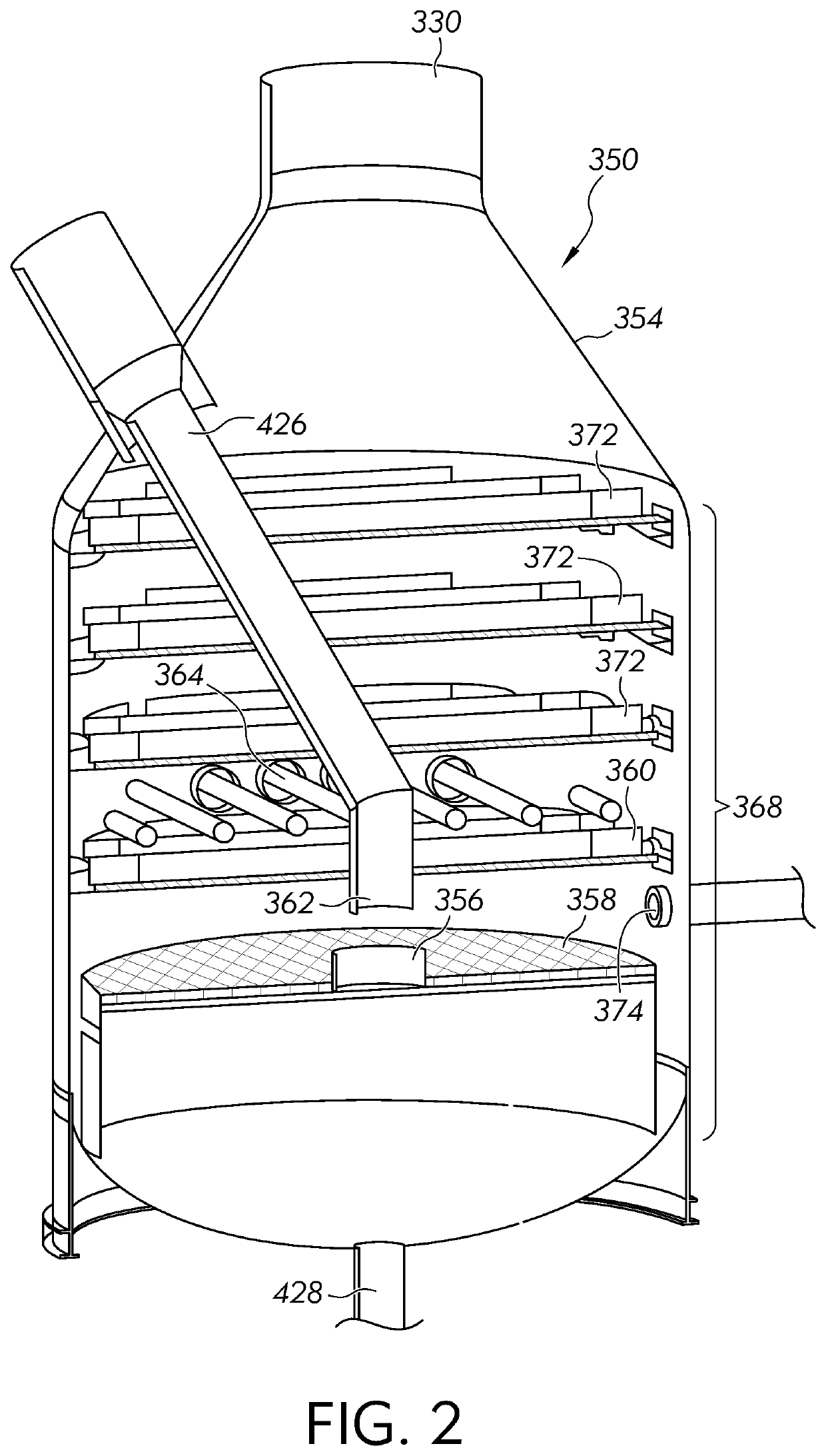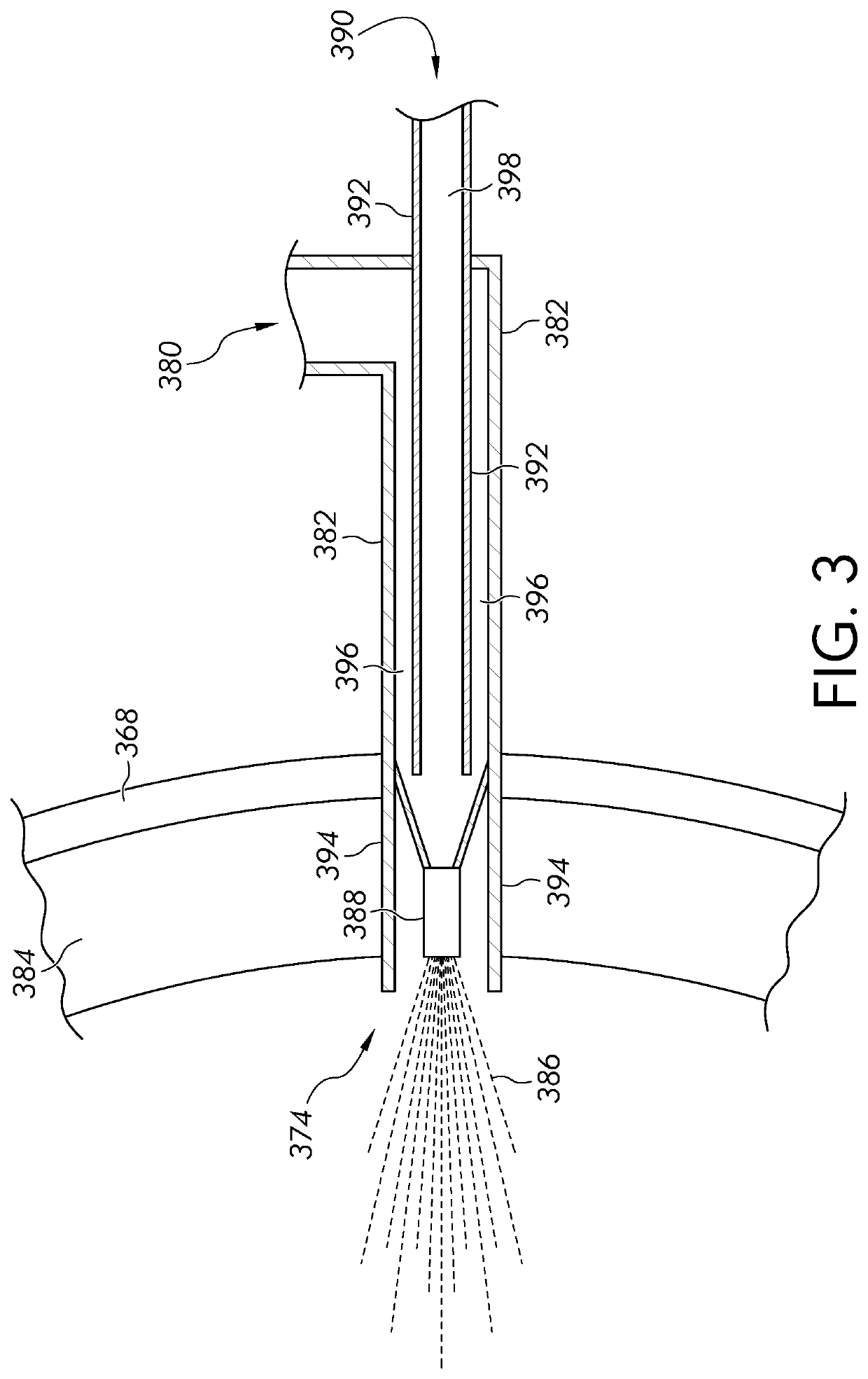Methods for forming light olefins by cracking
a technology of light olefins and cracking, which is applied in the field of cracking methods for forming light olefins, can solve the problems that the cracking of naphtha or butane may not form enough coke on the catalyst to burn to generate heat, and achieve the effect of reducing the cost of producing light olefins
- Summary
- Abstract
- Description
- Claims
- Application Information
AI Technical Summary
Benefits of technology
Problems solved by technology
Method used
Image
Examples
Embodiment Construction
[0019]Embodiments related to methods for processing chemical streams are disclosed herein. In one or more embodiments, the chemical stream that is processed may be referred to as a feed stream, which is processed by a reaction to form a product stream. In one or more embodiments, the feed stream may comprise one or more of naphtha or butane. Butane is defined as either n-butane or iso-butane or a combination of both. The feed stream may be converted by reaction to a product stream which may comprise one or more of ethylene, propylene, or butene. Ethylene, propylene, and butene may be referred to herein as “light olefins.” As described herein, butene many include any isomer of butene, such as α-butylene, cis-β-butylene, trans-β-butylene, and isobutylene.
[0020]In one embodiment, the product stream may comprise at least 50 wt. % light olefins. For example, the product stream may comprise at least 60 wt. % light olefins, at least 70 wt. % light olefins, at least 80 wt. % light olefins, ...
PUM
| Property | Measurement | Unit |
|---|---|---|
| superficial gas velocity | aaaaa | aaaaa |
| superficial gas velocity | aaaaa | aaaaa |
| wt. % | aaaaa | aaaaa |
Abstract
Description
Claims
Application Information
 Login to View More
Login to View More - R&D
- Intellectual Property
- Life Sciences
- Materials
- Tech Scout
- Unparalleled Data Quality
- Higher Quality Content
- 60% Fewer Hallucinations
Browse by: Latest US Patents, China's latest patents, Technical Efficacy Thesaurus, Application Domain, Technology Topic, Popular Technical Reports.
© 2025 PatSnap. All rights reserved.Legal|Privacy policy|Modern Slavery Act Transparency Statement|Sitemap|About US| Contact US: help@patsnap.com



